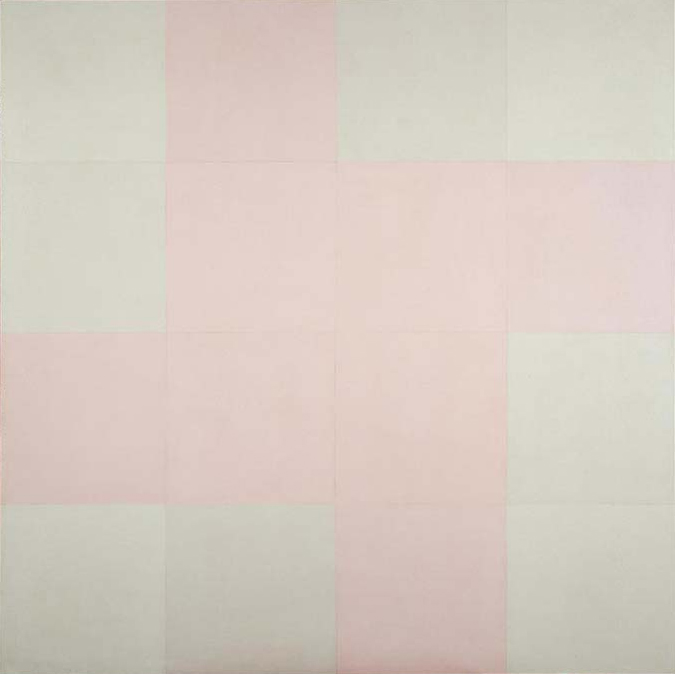We acknowledge the Traditional Owners of the land on which the Queensland Art Gallery | Gallery of Modern Art stands and recognise the creative contribution First Australians make to the art and culture of this country.

Robert Hunter / Australia 1947–2014 / No. 4 untitled painting 1968 / Synthetic polymer paint on canvas / 158.4 x 158.4cm / Purchased 1987 / Collection: Queensland Art Gallery | Gallery of Modern Art / © Robert Hunter/Copyright Agency
Robert HunterNo. 4 untitled painting 1968
On Display: QAG, Gallery 13
Robert Hunter first saw the American abstract artist Ad Reinhardt’s gridded black paintings in a touring exhibition, ‘Two Decades of American Painting’, at the National Gallery of Victoria in 1967, an experience which confirmed for him the future direction of his art. Partly inspired by Reinhardt’s gridded expositions in black, Hunter’s first solo show in 1968 featured 13 ‘white-on-white’ paintings, marking the beginning of a lifelong painting project. Reinhardt’s famous maxim, ‘The more stuff in it, the busier the work of art, the worse it is. More is less. Less is more’,1 was taken to heart by Hunter, who eschewed painterly objectivity from then on.
In No. 4 untitled painting Hunter meticulously proceeds through a series of colour variations on the theme of a ‘rotating’ square, modifying colour, hue, and tone by subtle degrees. Hunter explains:
I want to make something alien — alien to myself. I want to produce something that is neutral — if it is neutral enough it just is. I suppose that these are questions about existence. If something is to exist simply then all symbols and associations have to be eliminated.
Each Hunter painting relates to those that come before and then after it, building upon perceptual problems which are set, solved and then moved forward. This generative nature has made his practice arguably the most uncompromising and most unfettered by trends or shifting attitudes within Australian art history.
Endnotes:
1 Ad Reinhardt, ‘Twelve rules for a new Academy’, originally published in Art News, May 1957, New York, republished in Barbara Rose (ed.), Art as Art, The Selected Writings of Ad Reinhardt, The Viking Press, New York, 1975, p.204, quoted in Sue Cramer, Less is More: Minimal and Post-Minimal Art in Australia [exhibition catalogue], Heide Museum of Modern Art, Vic, 2012, p.17.
Senior Australian painter Robert Hunter (1947—2014) is known for his delicately nuanced, close-toned, near-monochrome paintings that endlessly adapt and reinvent the abstract grid. Developed during the artistic radicalism of the 1960s, Hunter’s idiosyncratic visual language has transformed only in degrees over time, having always been based on an implied grid of squares, circles or diagonals; the edges and planes demarcated with the aid of masking tape.1
Born in Melbourne, Hunter was strongly influenced by teachers Dale Hickey and James Doolin, and later the enigmatic black paintings by Ad Reinhardt, as well as the conceptual grids of Sol LeWitt. However, early in his career he found his own unique abstract language and set of parameters that would sustain his practice for nearly five decades.
Endnotes:
1 Angela Goddard, ‘Brass Tacks: Binns, Johnson, Sansom and Hunter’ in Ten Years of Contemporary Art: The James C Sourris AM Collection [exhibition catalogue], Queensland Art Gallery, Brisbane, 2011, p.91.